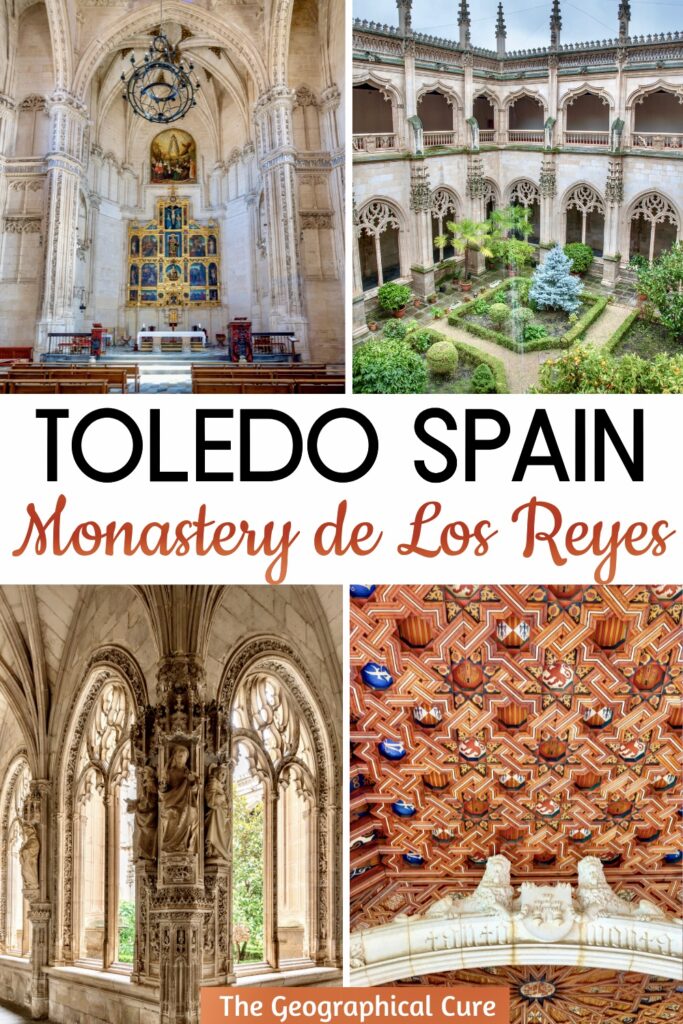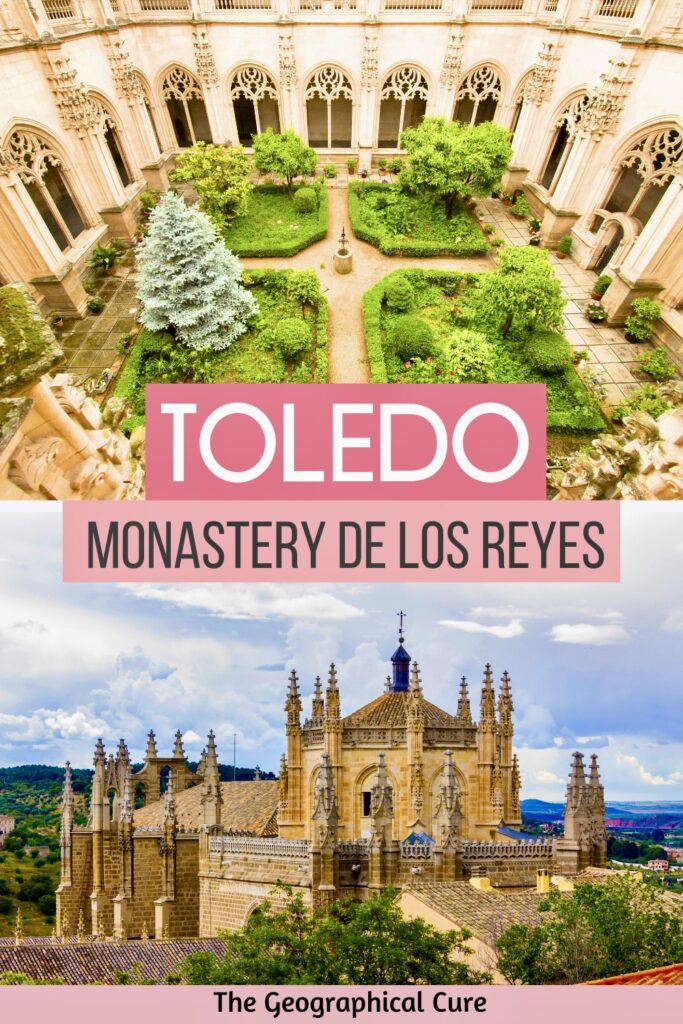The Monastery of San Juan de los Reyes is one of Toledo’s most significant buildings. It’s a Flamboyant Gothic construction by architect Juan Guas.
The Catholic monarchs — Ferdinand and Isabella — commissioned it as their funerary mausoleum. It also commemorated the queen’s victory at the Battle of Toro in 1476, which solidified her claim to the throne.
The queen dedicated the monastery to the family’s patron saint, St. John the Evangelist.
This is where the monastery gets its name and why you see eagles, the symbol of St. John, throughout the building. As it happens, the queen also named her children after him (Juan and Juana).
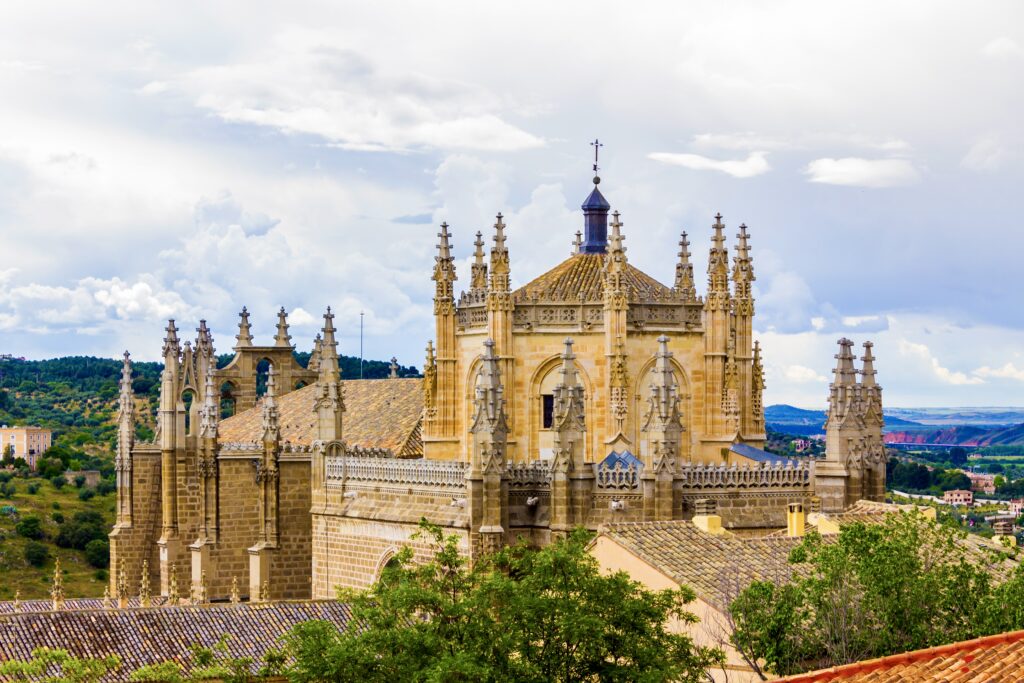
The monarchs were ultimately buried in Granada, not Toledo. But the beautiful building, in the so-called Isabelline style, is still well preserved and worth a visit.
Guas built the lavish monastery in 35 years. Once you see it all, it’s hard to believe it was completed in such speedy fashion.
San Juan de los Reyes was once the largest monastery in the city. But Napoleon’s troops set it on fire, destroying all but the church and one of the delightful cloisters.
The monastery was restored in the 19th century and converted to an archaeological museum. But Franco returned it to the Franciscan order, who have managed it ever since.
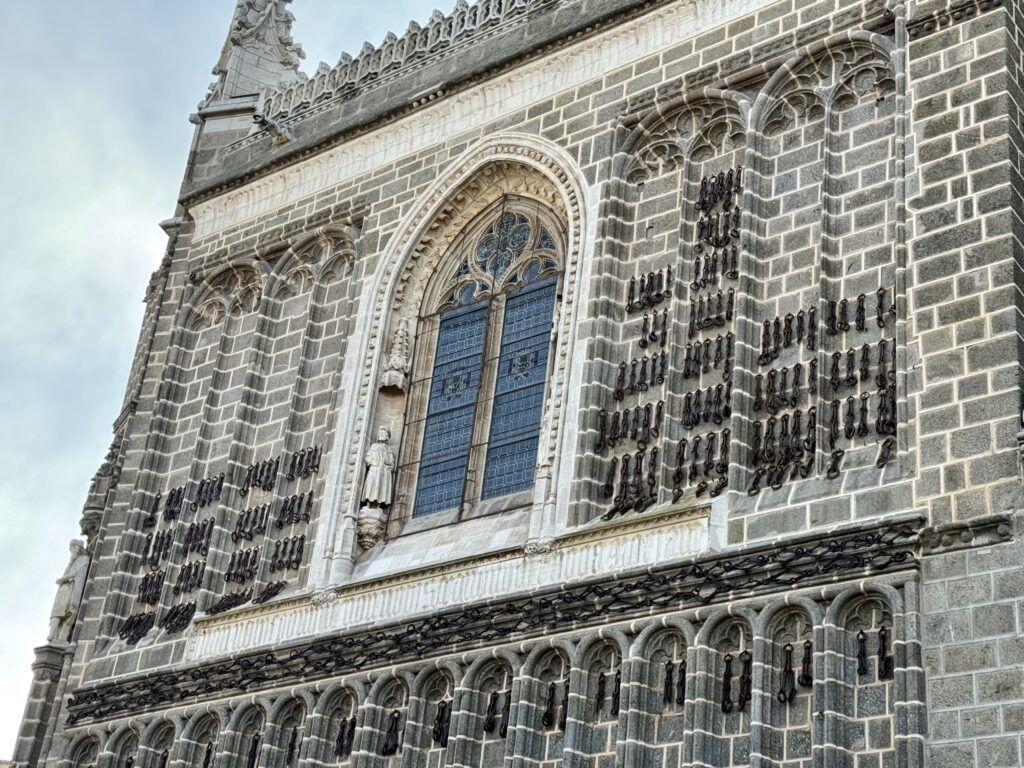
Monastery of San Juan de los Reyes: What To See
Exterior Facade
Take a minute to admire the facade. It was designed as a coffin with burning candles. The “candles” are the Gothic pinnacles on the upper part of the building.
It’s famously festooned with the 500 year old chains. They are the shackles of the Christian prisoners taken captive and imprisoned in Ronda.
When they were freed by the Catholic monarchs, legend holds that they brought their shackles to Toledo. They hung them on the walls of the church where the monarchs were supposed to be buried, as a votive offering.
Today, they are symbols of freedom, victory, and the Christian faith.
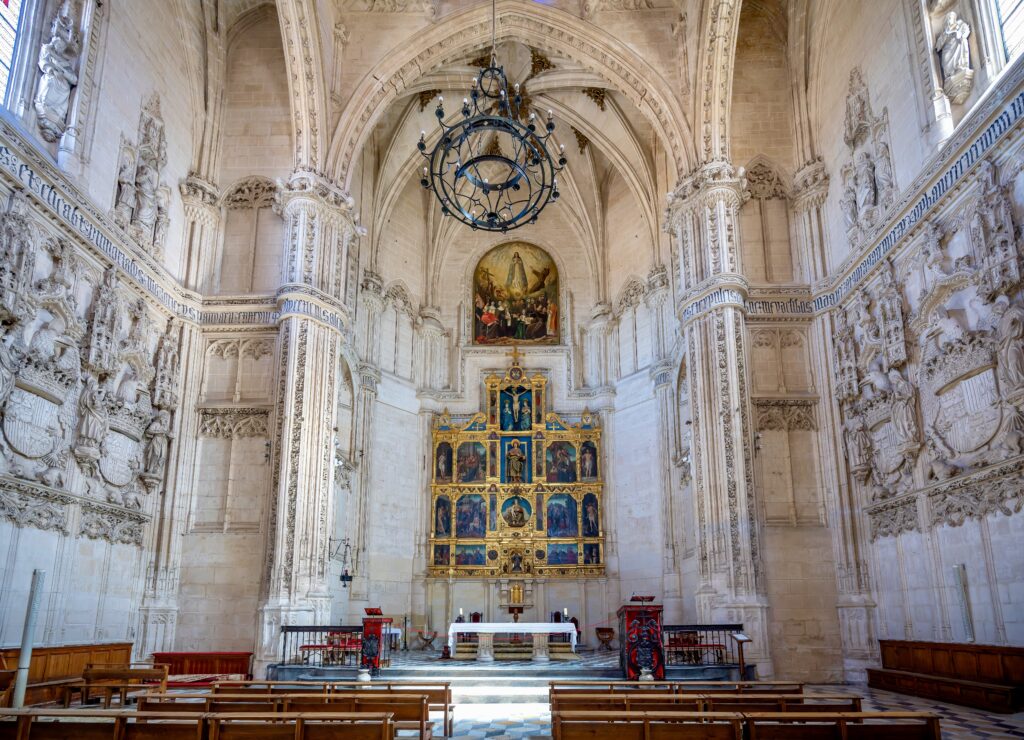
Church
Go to the side door to enter the monastery. Head downstairs to buy your ticket.
Then, head into the church. It’s made of creamy limestone with a single nave. It’s topped with a crown-shaped dome with interfacing vaults.
If you take a seat on one of the pews near the main altar, you would find yourself in the location intended for the tombs of Ferdinand and Isabella.
You’ll also be surrounded by plenty of propaganda proclaiming the monarchs’ greatness.
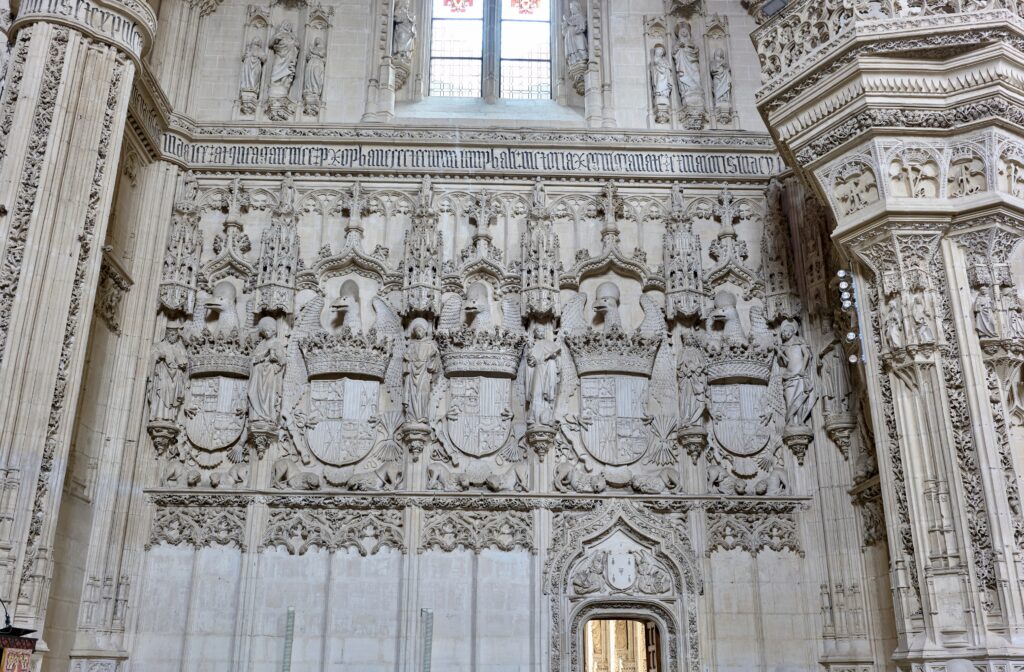
The coat of arms, with a lion and castle, is almost omnipresent.
Above each one is the eagle of St. John, clutching the coat of arms. The emblem is accompanied by a yoke and a bundle of arrows on either side, which are the personal symbols of Isabella and Ferdinand, respectively.
In the upper galleries, you can see the monarchs’ initials, Y for Isabella (in old Spanish) and F for Ferdinand. Writing in Latin extols their feats.
The main altarpiece isn’t original, as it was destroyed by Napoleon. This one comes from the Santa Cruz Hospital, now a museum of Spanish art and archaeology.
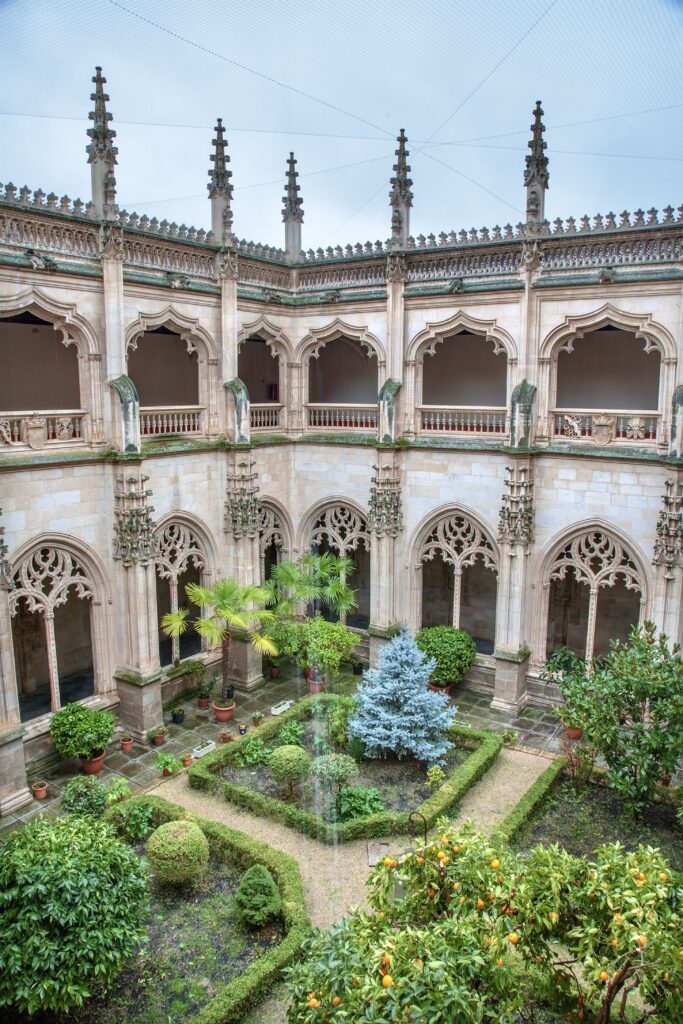
Cloister
The finely carved cloister is a real highlight and peaceful spot. The cloister’s beauty lies in its intricate design and finely carved stonework. It’s a harmonious mix of pinnacles, balustrades, and arches.
The cloister consists of two levels, each featuring a series of arches and arcaded walkways. The lower arches have Gothic tracery and the upper level is more Moorish.
The lower cloister is decorated with plant and animal motifs — lions, cupids, dragons, eagles, and other fantastical beasts. In one corner, you can spy a monkey sitting on a toilet reading the Bible upside down.
In medieval times, animals were highly symbolic. They were usually related to sins and virtues. For example, lions represented justice, monkeys and rabbits symbolized sexual vice, and unicorns indicated purity.
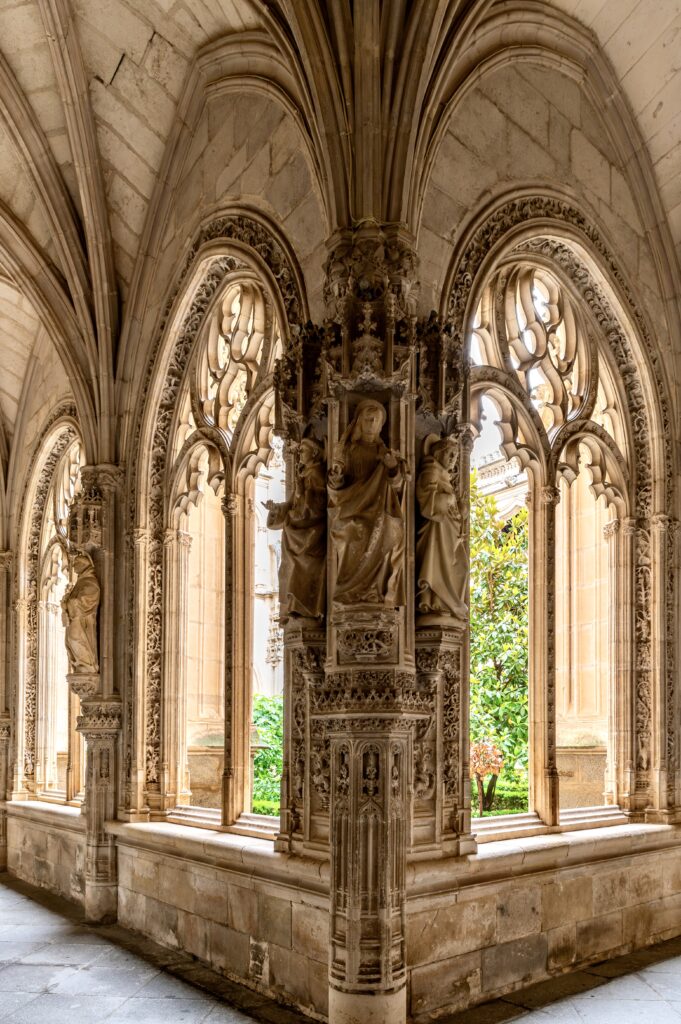
You should definitely head up to the upper cloister. It’s home to a spectacular Mudejar coffered ceiling.
It’s decorated with geometric carvings and symbols of the Catholic monarchs. Yokes, arrows, and the various kingdoms appear once again.
Since the upper cloister was finished after Granada was conquered, you can also see that city’s coat of arms, a pomegranate.
Strolling around, you’ll also see some gargoyles and a mix of Gothic and Muslim decorations.
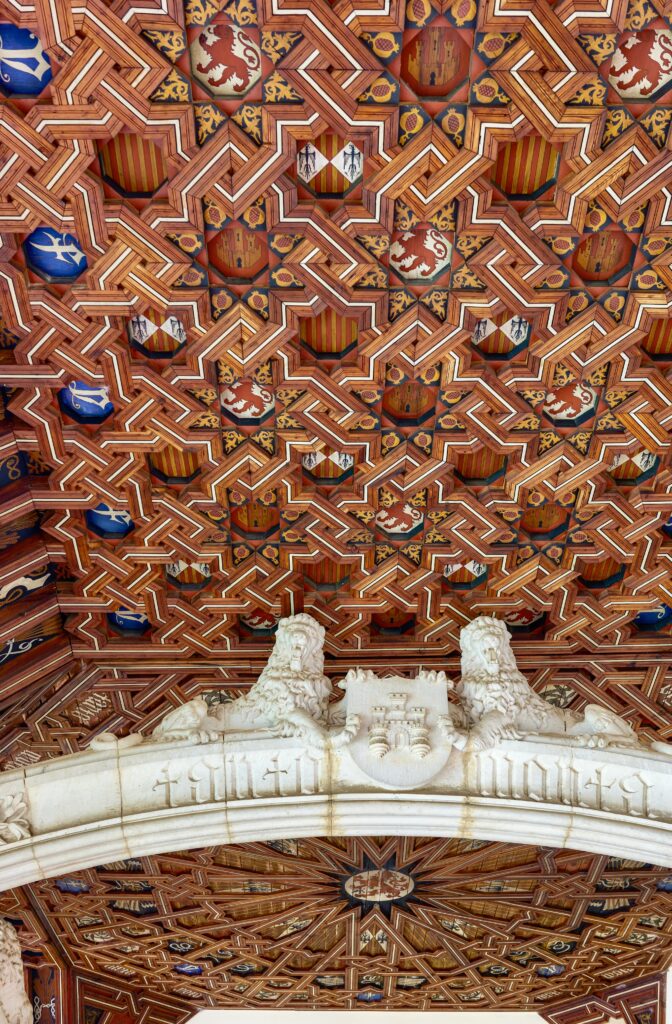
Practical Information For Monastery of San Juan de los Reyes
Address: C / Reyes Católicos, 17
Hours: Open in winter from 10:00 am to 5:45 pm summer from 10:00 am to 6:45 pm. The ticket office closes 20 minutes before the museum’s closing time.
Tickets: 4 €. Entry is included in the Toledo Wristband.
Is the Monastery Worth Visiting? While it doesn’t have any frescos and art, I think it’s worth visiting just for the history and to see the cloister.
I hope you’ve enjoyed my guide to the Monastery of San Juan de los Reyes. You may find these other related travel guides useful:
- 2 days in Madrid itinerary
- guide to the Prado Museum
- 1 day in Toledo itinerary
- guide to Toledo Cathedral
- guide to the El Greco Museum
- guide to the Santa Cruz Museum
- El Greco’s art in Toledo
- guide to Santa Maria La Blanca
Pin it for later.

